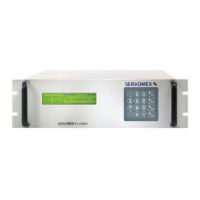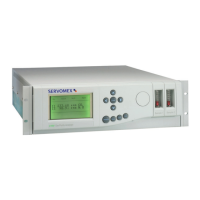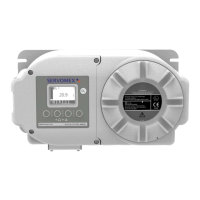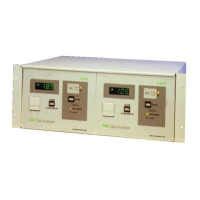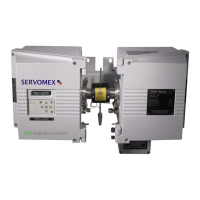MultiExact Gas Analyser 5 – Installation and set-up
5.3 Connect the sample/calibration gas pipeline(s)
Sample and calibration gases may be toxic or asphyxiant:
• Ensure that the external connections are leak free at full
operating pressure before you use sample or calibration gases.
• Ensure that the sample/bypass outlet pipes are vented to an
area where the gases will not be a hazard to people.
• Ensure that the analyser is used in a sufficiently well-ventilated
environment, to prevent the build-up of toxic gases.
Ensure that the pipes that you connect to the analyser are routed so
that they do not present a hazard to people.
When you carry out a leak test, do not exceed a maximum pressure of
34.5 kPa gauge (0.35 bar gauge, 5 psig) and do not introduce a sudden
change of pressure into the analyser. If you do, you can damage it.
It is essential that a MultiExact Trace O
2
analyser is isolated from the sample
system until any cleaning solvents are fully purged from the pipelines.
Failure to take this precaution may lead to contamination of the zirconia
sensor, which will be observed as an offset and drift in output.
Connect your sample/calibration gas inlet and outlet pipelines to the inlets and outlets
on the rear of the analyser (see Figure 2). The sizes of the fittings are as follows:
2
2,
2
4
8
inch outside diameter
stainless steel stub
4
2
purity and
control transducers
8
4
The optional external filter should be fitted to the inlet pipe with the compression fittings
provided: see Section 8.4.
Refer to Section 2.4 for sample gas requirements, and Section 2.5 for calibration gas
requirements. Locate your gas selection valves as close as possible to the analyser.
You must switch on the electrical supply and leave the analyser for at least
4 hours (or 24 hours for the trace GFX transducers
) before you allow
calibration or sample gases into the analyser. Refer to the caution at the start
of Section 6.
05410001A / Revision 6 35
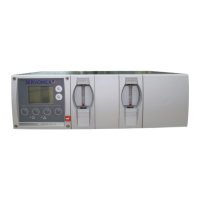
